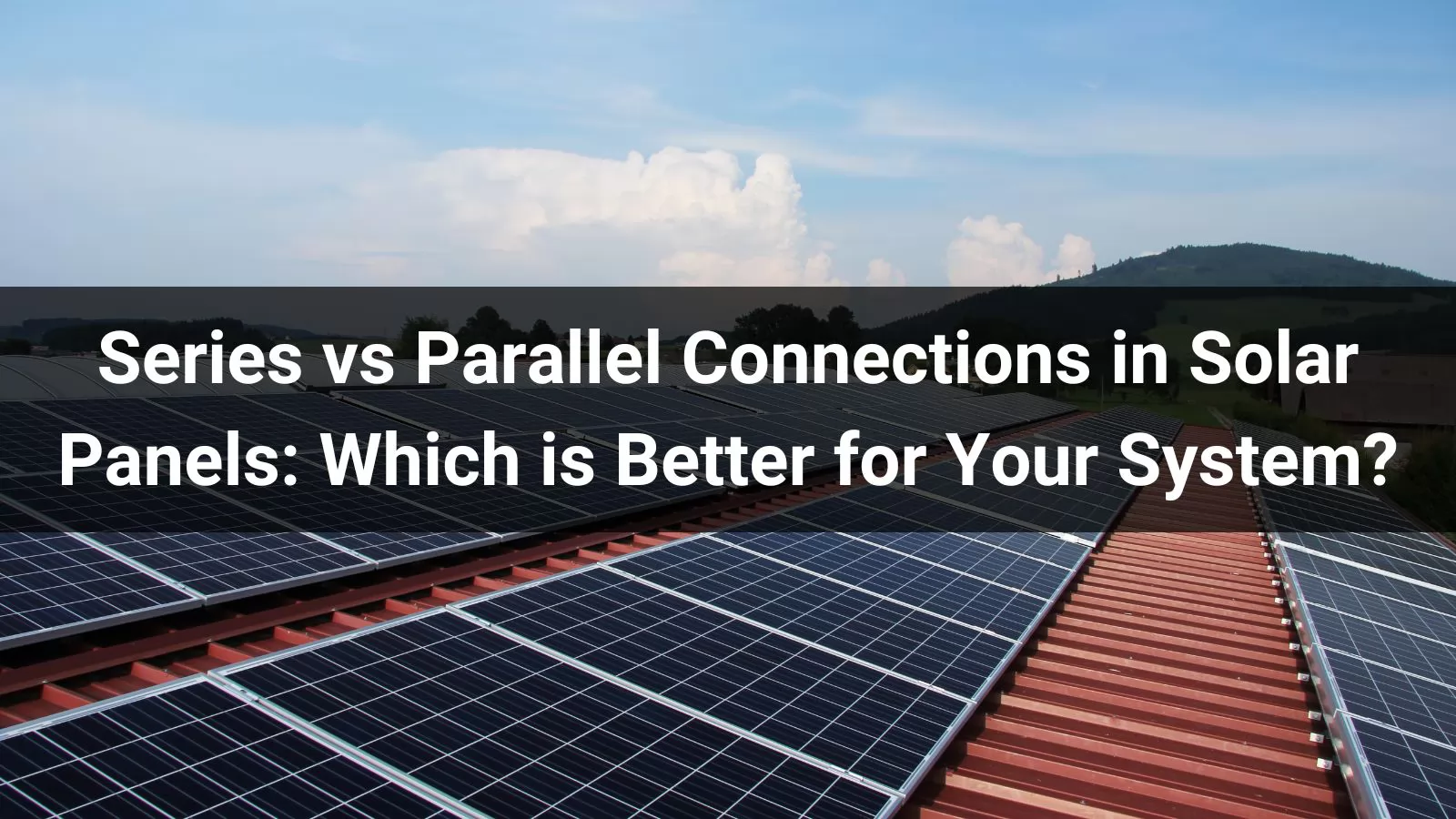.png)

.png)


.png)
.png)
.png)
.png)


When designing a solar power system, one of the most important decisions you'll make is how to wire your solar panels. The two most common wiring configurations are series and parallel connections. These connections affect the overall voltage, current, and efficiency of your system. In this guide, we’ll break down the differences between series and parallel connections, explore their advantages and disadvantages, and help you determine which is best for your solar system.
A series connection involves linking solar panels in such a way that the positive terminal of one panel is connected to the negative terminal of the next. This increases the voltage of the system while maintaining the same current as the individual panels. The total voltage output is the sum of the individual panel voltages.
Key Features of Series Connections:
Series connections are often used when you need higher voltage outputs or when connecting solar panels to inverters that require a specific voltage input.
In a parallel connection, the positive terminals of all solar panels are connected together, as are the negative terminals. This configuration keeps the voltage constant across all panels while increasing the current. The total current output is the sum of the individual panel currents.
Key Features of Parallel Connections:
Parallel connections are suitable for installations where a higher current is needed or in areas with partial shading, as they allow other panels to continue generating power even when one panel’s performance is compromised.
Here’s a breakdown of the pros and cons of series connections:
Parallel connections come with their own set of benefits and challenges:
The decision between series and parallel connections depends on several factors specific to your solar installation:
In many cases, a combination of series and parallel configurations is used to balance voltage and current, depending on the specific needs of the system.
At HANDA, we offer a wide range of solar connectors that are perfect for both series and parallel configurations. Whether you’re looking for MC4 connectors for series wiring or high-current connectors for parallel setups, we have the right solutions for your needs.
Why Choose HANDA:
Contact us today to find the best connectors for your solar panel system, and ensure optimal efficiency and performance for years to come.
Choosing the right connection—whether series or parallel—is critical to the efficiency and longevity of your solar system. By understanding the benefits and limitations of both configurations, you can make an informed decision that best suits your needs. If you’re unsure, HANDA’s expert team is here to help guide you in selecting the right connectors for your solar system.
Discover this amazing content and share it with your network!

